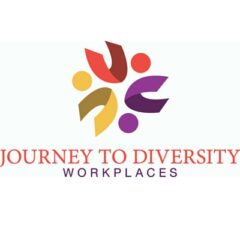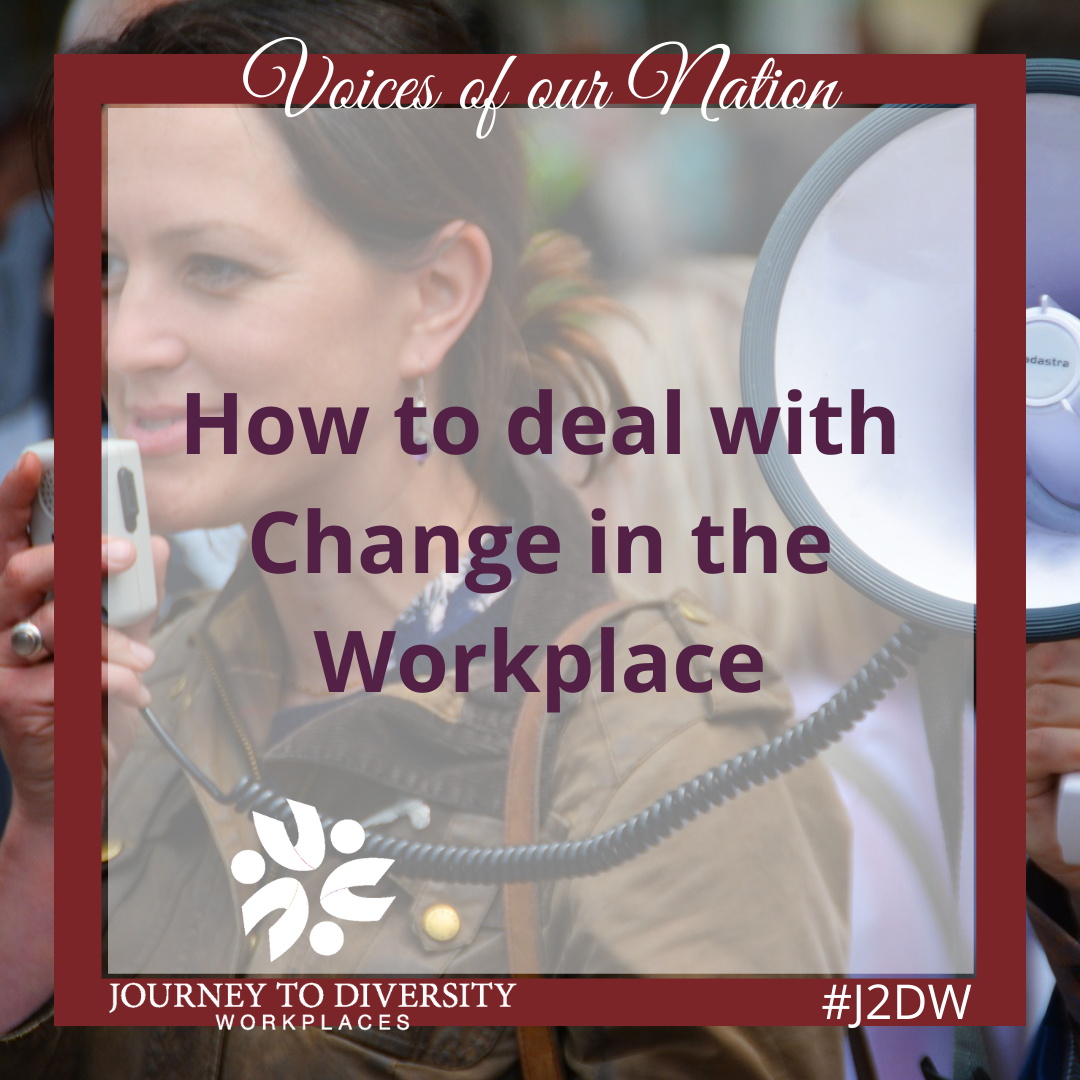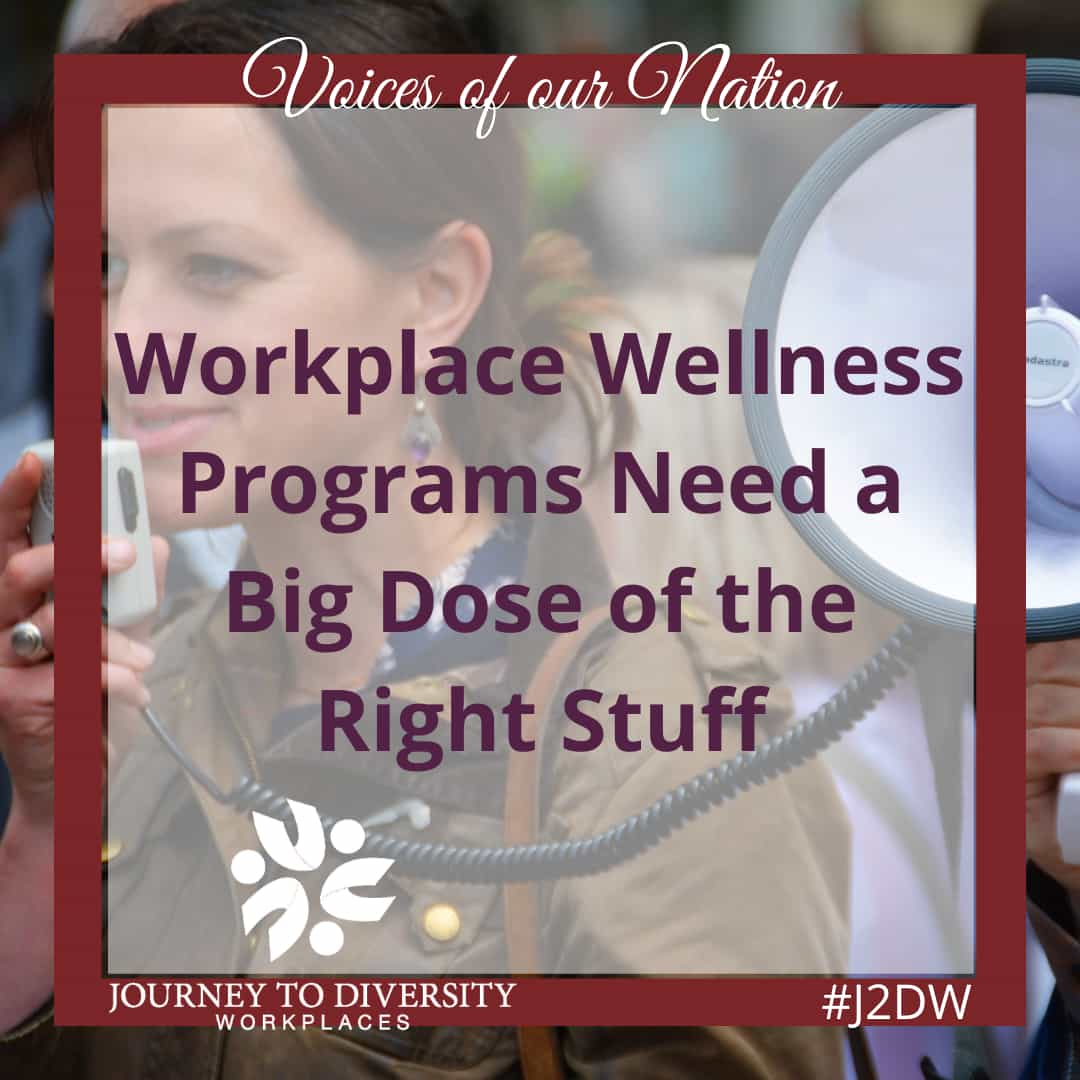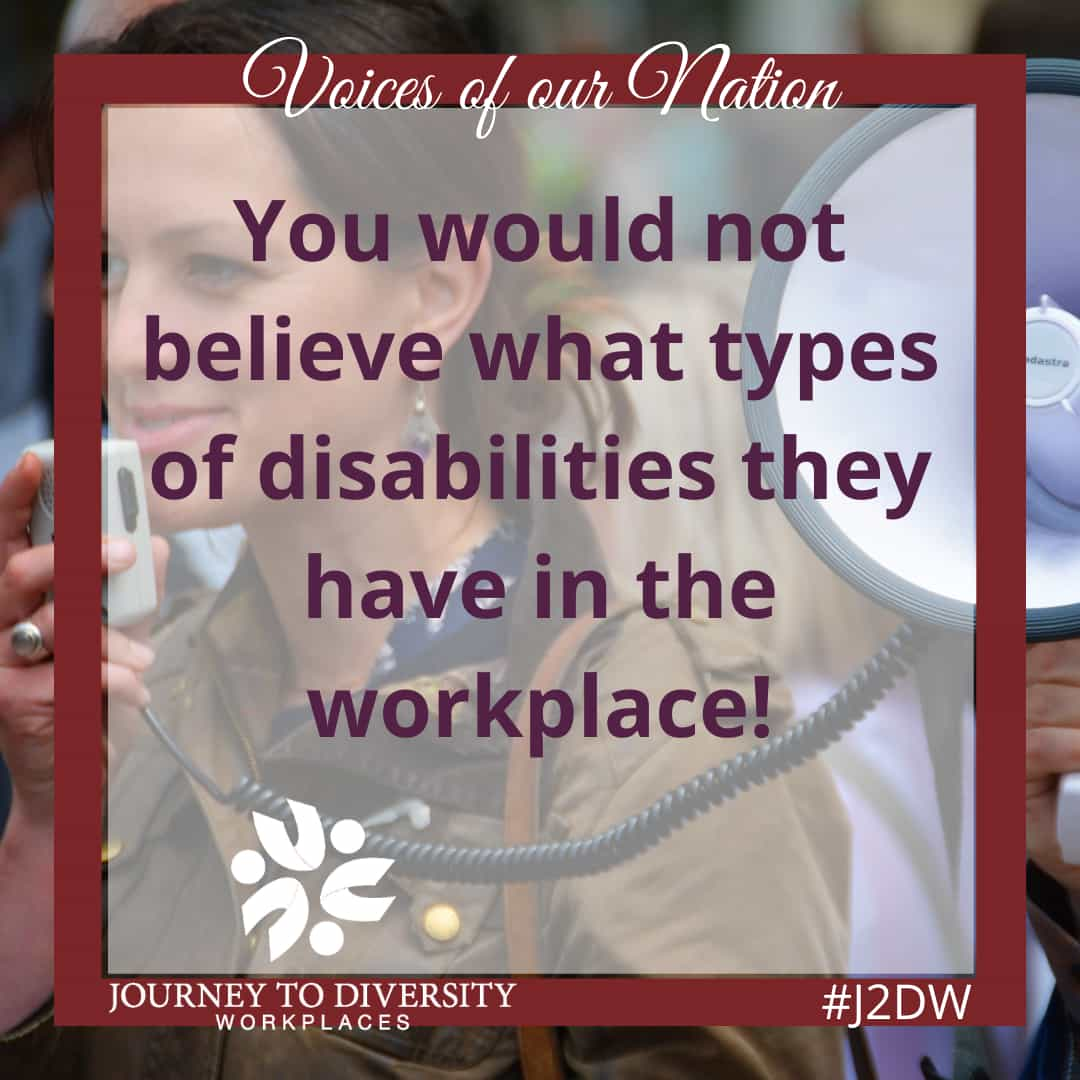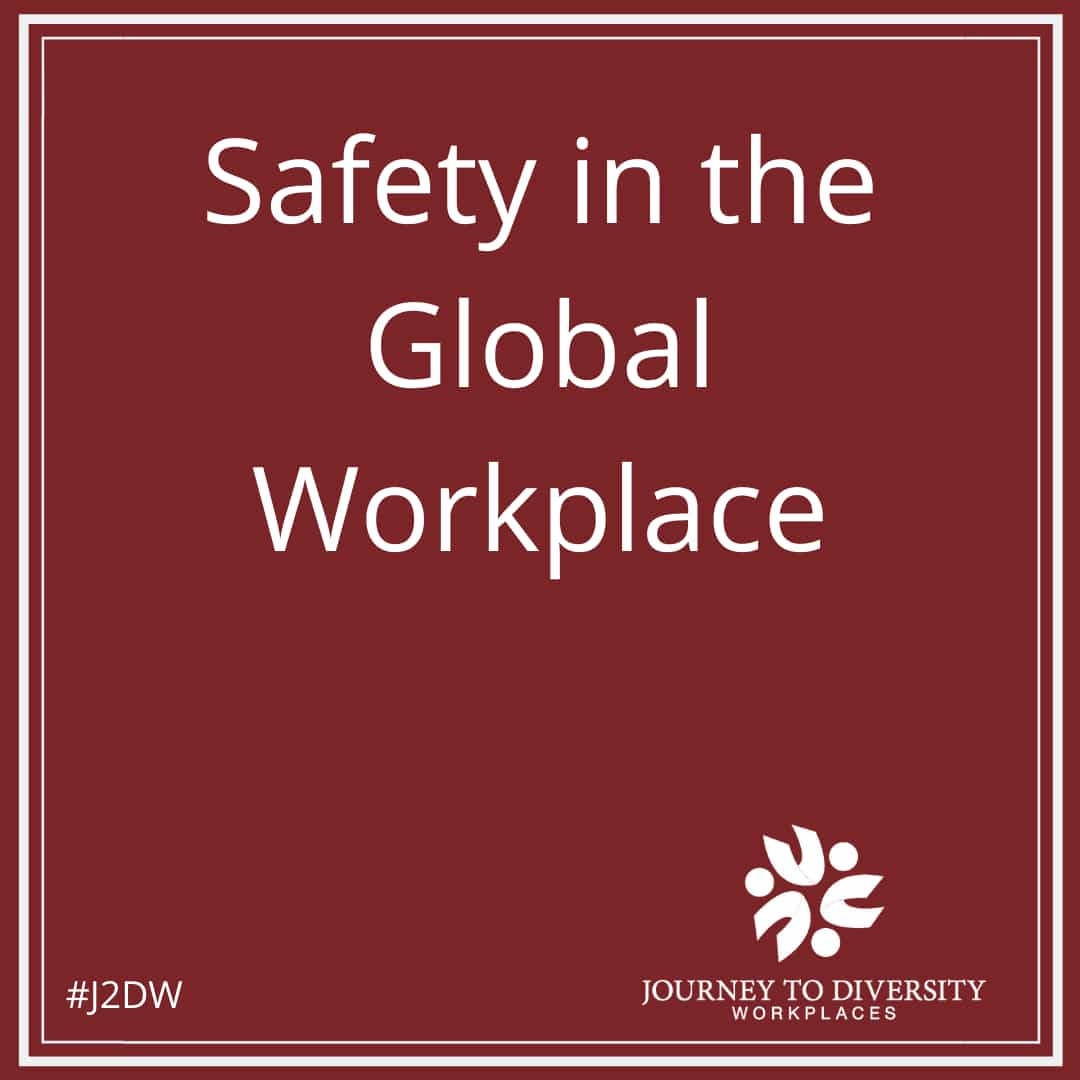News
How to Deal with Change in the Workplace
Twain
Let’s face it. No one really likes change – especially at work. Sure it’s okay when it involves something we don’t care about, but once it gets personal – we often resist.
Change in the workplace is vital for growth and development, but it can result in stress and have a negative impact on our psyche.
Resistance to change typically happens when our personal needs don’t match the new circumstances imposed at work. Simply put, these two opposing forces don’t connect. There is a driving force trying to promote change (typically your boss) and an opposing force trying to keep things the same (typically you).
Opposition and resistance to change is a very normal reaction – especially when you don’t see the change coming. Typically, resistance starts out strong when the change first happens and depending on how we respond – our level of stress varies. We can either participate and try to get more involved in the change or outright resist, which can sometimes make things much more difficult.
Why do We Resist Change?
The most common response is ‘fear of the unknown’. Most of us enjoy our security and control, and we don’t want to put this at risk – especially if we don’t understand the need for change. Change also has a habit of showing up at the worst possible time, which only magnifies our stress and resentment towards the people who make it happen. Rewarding and productive relationships with bosses can quickly be replaced by mistrust and stifle any potential change advantages.
Imagine a stressful change you experienced at work and how you reacted? If you could go back in time and help implement that change differently to reduce stress – what would you do? Interestingly, most people would recommend that communication is one of the most important steps to implement any change.
Instead of just quickly implementing something new, what if management got more people involved in the potential change early and asked for input and participation in making the change – would this improve the response and help reduce stress? As managers, it’s crucial to take a step back and understand the nature of people’s resistance – to help overcome any perception barriers to change. By communicating effectively and focusing on ways to reduce resistance to change, the results and implications can be much more positive.
Can Change be Positive?
I’m sure we’ve all been through a stressful change in our lives that ultimately led to something more positive in time. Maybe it helped us change our habits or helped to bring a new opportunity into perspective. It’s always beneficial to avoid getting stuck in old routines, and ways of thinking. Change can often be very beneficial when it comes to new ways of doing things, and each experience can ultimately make you stronger. Most people that become comfortable with change tend to be more flexible and open to adapt to new situations and challenges. Being outside your comfort zone might not be that pleasant, but it can help to build your self-confidence and personal development.
Our opposition to change is very natural and for any organization that wants to grow, understanding our resistance and how to manage it is essential. The trick for all of us when it comes to change is to be open and try to see the bigger picture. Look for positive ways to either overcome the change or provide constructive feedback to help improve the potential outcome. At the end of the day, most of us agree that change can make for a better tomorrow and when we’re in control of change – it helps make for a better today.
References
Boohene, R. (2012). Resistance to Organisational Change: A Case Study of Oti Yeboah Complex Limited. CS Canada. Retrieved August 24th, 2016 from http://cscanada.net/index.php/ibm/article/view/2293
Heathfied, S. (2016). How to Reduce Employee Resistance to Change. The Balance. Retrieved August 24th, 2016 from
https://www.thebalance.com/how-to-reduce-employee-resistance-to-change-1918992
Lawrence, P. (1969) How to Deal with Resistance to Change. Harvard Business Review. Retrieved August 24th, 2016 from http://www.forbes.com/sites/lisaquast/2012/11/26/overcome-the-5-main-reasons-people-resist-change/#24c51d183393
Lorenzi, N. (1999). Managing Change: An Overview. Journal of the American Medical Informatics Association. Retrieved August 24th, 2016 from http://pubmedcentralcanada.ca/articlerender.cgi?accid=PMC61464
Quast, L. (2012). Overcome The 5 Main Reasons People Resist Change. Forbes. Retrieved August 24th, 2016 from http://www.forbes.com/sites/lisaquast/2012/11/26/overcome-the-5-main-reasons-people-resist-change/#24c51d183393
This article was contributed by volunteer blogger Patrick Boshell and edited by volunteer editor Thomas Sosnoski.
Video Blog #2 – Diversity in the tech sector
Why you should forget everything you learned about medical appointments!
I was thinking in the shower today about medical appointments. I have previously written on this topic.
Many, or most, hospitals in Toronto now offer diagnostic tests 24/7 by appointment. My own father has had several at Princess Margaret Hospital to follow cancer treatment he had a few years ago. These include CT scans, MRI, x-rays, etc.
Nurses, as you well know, work eight or twelve-hour shifts. So why can’t doctors?
Let’s say we have two oncologists. Why can’t Oncologist A work days Weeks 1 and 3, and nights Weeks 2 and 4. With Oncologist B working days Weeks 2 and 4, and nights weeks 1 and 3. And when I say nights, I mean 8 pm to 3 am to accommodate those who work evenings and nights.
The funny thig is, I’m certain you won’t have a problem finding people who want this!
So why aren’t we doing it already? So many professionals work shift work. Emergency Department doctors work shift work. So why can’t the doctors who run our oncology clinics, or renal clinics work shift work?
I think we need to have a conversation on how our healthcare providers work with our professors/school, employers, landlords, etc. Everyone probably tells you that “your health comes first.” That’s total BS. Without money to pay the rent, and purchase groceries, the treatment means nothing.
It’s time we put patients first. It’s time for us to stand up and ask for better services.
Case in point – Here in Barrie we didn’t have in-centre dialysis. That meant if you were admitted to the hospital, you had to be transported to another hospital for dialysis. Almost 2 years ago I started writing letters to the CEO of the local hospital, and this past April I cut the ribbon for the new dialysis unit.
So let’s have the conversation and improve patient health by offering clinical appointments 24/7.
Workplace Wellness Programs Need a Big Dose of the Right Stuff
Workplace wellness is any workplace health promotional activity or organizational policy designed to support healthy behavior in the workplace. Employee wellness programs is an attractive benefit for potential employees and major perks for existing employees. Before instituting a wellness program, workplaces should carefully weigh the costs and benefits to determine if initiating a wellness program will serve the needs of the workplace.
Chronic diseases such as depression and hypertension can have a variety of negative impacts on an employee; decline in the overall health, an increase in health-related expenses, lower productivity, as well as days of work missed. Some workplaces have realized the benefits of health promotion, and to curb the costs of rising health care, employers offer workplace health programs to their employees. Ideally, the office should be a place protecting the safety and well-being of employees while providing them with opportunities for better long-term health.
Employee wellness programs can boost office morale and strengthen employee relationships. Whether a workplace institutes a weight loss challenge, a runners group or an on-site gym, the workplace can bring employees together who have a shared interest. Changing how employees interact and support one another can translate to a more supportive and a positive work environment overall.
The cost of employee wellness programs is something that every employer must weigh. Obviously building a gym or bringing in a nutritionist will cost money. Some workplaces may not have the sufficient resources available to implement wellness programs. Workplace wellness programs also include policies intended to facilitate employee health, including allowing time for exercise, providing on-site kitchens and eating areas, offering healthful food options in vending machines, holding “walk and talk” meetings, and offering financial and other incentives for participation. Effective workplace programs, policies, and environments that are health-focused and worker-centered have the potential to significantly benefit employers, employees, their families, and communities.
However, a workplace wellness programs may inadvertently discourage employees from participating in the company’s health benefits. The health within the workplace is made up of numerous factors and some are out of a person’s control. Some employees can be genetically predisposed to high blood pressure, high cholesterol, and even diabetes, and it is important to take these factors into consideration when developing an effective wellness program for a workplace. For some employees, the idea of required participation in a wellness program is intimidating. If an employee doesn’t reach the workplace’s goal and money is involved, it can potentially add stress within the workplace.
While it remains unclear how well workplace wellness programs are doing at achieving all of their original goals, one thing that is clear is that there are benefits to both the employee and the employer. Wellness programs have led to higher productivity, lower absenteeism with a greater job satisfaction and commitment by employees. By covering the cost of a wellness program, or even just covering a portion of the cost, employers have the ability to take the cost burden of the most efficient programs off of their employees’ shoulders. Investing in clinically-proven wellness programs fosters healthier, more productive, and happier employees. Making wellness a priority by providing incentives can attract the best employees to your workplace. It shows that a workplace will care about the well-being of your employees which will make the top employee prospects want to work for you. Between health benefits, financial incentives, and possibly even improved job satisfaction, workplace wellness programs may be worth implementing in the workplace.
This article was contributed by volunteer blogger Shan Simpson and edited by volunteer editor Parul Datta.
You would not believe what types of disabilities they have in the workplace!
A disability can be defined as the consequence of an impairment that may be physical, cognitive, mental, sensory, emotional, developmental, or some combination of these. A disability may be present from birth, or occur at any time during a person’s lifetime. A progressive disability is an illness or medical condition that is expected to worsen over time. Well known examples of progressive disabilities include multiple sclerosis, carpal tunnel syndrome, Parkinson’s disease, dementia, and Alzheimer’s disease. Intermittent disabilities are short-term impairments or temporary conditions that do not permanently disable a person. Examples of intermittent disabilities include arthritis, chronic fatigue or depression. Any person can be directly or indirectly affected by an intermittent or progressive disability at some point in their life.
Disabilities are a significant concern in Canada due to an aging Canadian population. Approximately 3.8 million Canadians have a disability. Disabilities are categorized as visible or invisible. A visual disability is an impaired condition or function that is noticeable to other people. Seventy percent of Ontarians have a visual disability including autism, down syndrome, and epilepsy. Invisible disabilities are impairments that are not immediately perceivable by other people. Thirty percent of Ontarians have an invisible disability. Examples of invisible disabilities include fatigue, pain, cognitive dysfunctions and mental disorders, as well as hearing and eyesight impairments.
People with disabilities in Canada represent a large, untapped, labor pool. There are reportedly 443,900 people with disabilities who are ready and able to work but are unable to find employment. Almost half of these individuals have a post-secondary education. In order to have a fully inclusive workplace, a work environment must be created that is physically, technologically, and attitudinally accessible. Ontario was the first Canadian province to implement accessibility legislation. The Accessibility for Ontarians with Disability Act, or AODA, was designed to improve the accessibility standards for Ontarians with disabilities. The goal of this legislation is to provide people of all abilities the opportunity to participate in everyday life and to eliminate the barriers that limit the effectiveness of an employee. These barriers include physical, architectural, informational or communicational, and attitudinal barriers.
Physical barriers are feature of a building or premises which puts a disabled person at a substantial disadvantage compared to non-disabled people when accessing employment opportunities. These barriers limit or impede access to an area of a building or denies access altogether to services that a person may require to effectively complete their job. Architectural barriers are architectural features that are not compliant with accessibility for disabled users or prohibits usage or access to a building. Reasonable accommodations or adjustments should be made to eliminate these barriers so that each employee can maximize their potential and workplace’s goals for success can be achieved.
Communication barriers are obstacles in a workplace that prevent an effective exchange of ideas or thoughts. These barriers to communication can substantially distort or prevent communication within a workplace. The ability for workplaces to recognize the communication issues and come to a resolution can drastically improve working conditions and business culture of a workplace. Status differences can also be a barrier to workplace communication. This type of communication barrier exists due to differences in workplace hierarchy where employees have difficulty communicating either up or down the corporate ladder. This difficulty can be eliminated by management personnel who are able to understand their employees and address concerns about the important issues that must be addressed in the workplace.
Attitudinal barriers are behaviors or perceptions that prevent employees from communicating properly. Attitudes are commonly formed by an individual’s opinions or personal feelings on a subject or person. Sometimes these opinions may be difficult to alter. Attitudinal barriers may take the form of imposing a preconceived inferiority upon a disabled worker. This inferiority can root from causes entirely outside the work environment and be attributed to a person’s bias or bigotry. Attitudinal barriers can lead to people with disabilities being patronized by those around them. Employees with disabilities should be hired based on their ability to do the job. There are no special processes or procedures for disciplining or firing employees with disabilities who are not meeting performance expectations. An effective way to decrease a workplace’s attitudinal barriers is to increase the level of awareness and knowledge of disability issues.
Employers should be proactive and make accessibility part of the workplace culture. It is critical to assure that the workplace is accessible for current employees and for future employees. The workplace can become more successful when strategies are implemented that increase the accessibility and eliminate the barriers within a workplace.
This article was contributed by volunteer blogger Shan Simpson and edited by volunteer editor Parul Datta.
Annual General Meeting

[scribd id=303239411 key=key-0eIfA4Q0swFgZFTtOG7W mode=scroll]
Register to attend:
Error: Contact form not found.
Voluntary donation to help cover costs
Blog and article submissions welcome!!

Journey to Diversity Workplaces is both an experiment and a project.
Haven’t you ever wished you could work somewhere better? Somewhere where they went out of their way to not only appreciate you, but treat you right, and pay you fairly?
Our single biggest program that we have right now is our website & educational program. Volunteers submit articles for our blog and library section. These articles help promote change in the workplace and support our ongoing mission.
We invite you to join us in making regular blog and article submissions on topics of interest to you. Check out our submission guidelines to get an idea what we are looking for.
We welcome any and all submissions and appreciate the time our volunteers put into this effort.
Writing not your forte? We also need editors and other volunteers! Volunteers can get involved in a wide range of services.
Safety in the Global Workplace
Introduction
Advierta este papel entrará en llamas en diez segundos ! If you can read Spanish you might have already dropped this paper. However, if you cannot, let me translate the first line for you. It reads…”Caution, this paper will burst into flames in ten seconds!” Imagine yourself as a foreigner working in a country without being able to speak or read the language. Many foreign workers are too embarrassed or afraid of termination to admit that they do not understand instructions or safety procedures. A recent Census Bureau report indicates the number of United States residents for whom English is a foreign language is nearly 32 million 1. Mexican immigrants make up the largest minority group in our country today and many of these individuals have poor English language skills or none at all. They come to this country for an opportunity to work and make a better life. In order for these employees and their fellow workers to be protected properly, a way must be found to communicate safety information to them. We must familiarize ourselves with the way in which people communicate and learn and adapt our techniques to get the message across most efficiently.
A 16 year old Mexican immigrant working for a construction subcontractor from Texas who had been contracted by a framing contractor in Oklahoma, who in turn was working for a general construction contractor in Alabama, fell to his death from a roof at the construction site in Alabama. The Texas based contractor had a safety plan but it was written only in English. The general contractor in Alabama had a safety plan for its employees but it did not make any provision for subcontractors. Evidence indicated that the crew understood little or no English. Evidence gathered during OSHA interviews of the crewmembers, indicated that the crew had no knowledge of the safety plan 2. There were many mistakes made in this scenario and we must be mindful of this type of situation due to the changing composition of the modern workplace. As managers, we will face employees with various cultural and language backgrounds and these employees must be a vital and productive part of the overall scheme. The general contractor in this case should have incorporated any subcontracted employees in its safety plan. In so doing, these contingencies are provided for before they occur and may limit the company’s liability. With the rampant litigation in our country it is very important to cover all the bases where safety is concerned. The safety plan should include all employees and their unique language or culture situation. The subcontractor made the crucial mistake of hiring an underage individual. The further error occurred in not making arrangements for a non English speaking person to be made aware of all proper safety procedures.
Globalization
The watchword of the new century is without a doubt “Globalization”. Globalization has been defined as the evolution of economies and technologies across national borders. However, the term encompasses more phenomena than merely an exchange of currency and technology. Globalization has also created a migration of beliefs, cultures, languages and philosophies between the nations and peoples of the world. With the explosion of technological innovation, people around the world can communicate ideas, beliefs and social commentary in mere seconds and goods and services can be exchanged in hours or days. People from all areas of a country, or from around the world can travel to distant locations in search of freedom, adventure or financial betterment. Therefore we can conclude that globalization is a way to express the coming together of many nations and cultures, forming a new world environment of many varied and unique peoples living and working side by side. Even within our own borders there exists a multicultural and often multilingual work force. We find ourselves living and working next to people who may speak a different language than ours, have different beliefs and values than ours and reflect a different culture from our own. It is very important to realize that our safety and theirs depends on mutual respect and an ability to communicate with one another.
Global is a new term in the workplace as well. Businesses employ people from different cultures and backgrounds. We work with those who speak a different language, whether in our own company or the companies that we do business with. The bottom line is still the same, we all want to do our jobs efficiently and make a profit. The aviation industry outsources much of its maintenance work today. The industry figure for outsourced maintenance was recently reported at $2.5 billion. Ted Ozdemer, vice president of technical and engineering for Morten, Beyer and Agnew, says that within ten years as much as 80% of airline maintenance work will be outsourced 5. Safety is paramount in the aviation industry and these maintenance operations are under intense scrutiny. Studies are currently under way to uncover unsafe practices and procedures at the sites that perform this outsourced work. The number of incorrect parts, poor safety procedures and out of date information has been alarming. Communication is highlighted as the core reason for the deficiencies. It is evident that language barriers are a prime reason for putting workers and consumers at risk and new efforts must be made to tear down the barriers and establish clear lines of communication.
Outsourcing
Outsourcing has added new dimensions for management as well. Outsourcing refers to the delegation of internal production tasks to an external entity 3. Contracting out certain aspects of the companies operation to outside sources can be profitable and time-saving, but it brings new challenges in the safety field. “Offshoring”, which is simply outsourcing to companies outside the borders of your country, can sometimes expand these challenges further. We must be aware of our responsibilities for the safety of our employees, the safety of companies that we are affiliated with and also the ultimate safety of our consumers. It is important that we communicate and implement good safety procedures to those employees directly working for us and to those who are subcontracted labor. Ever changing international law and our favorable public image dictate that we begin to pay attention to these areas.
As in the earlier example of the 16 year old immigrant worker who died in Alabama, management must be aware not only of workers who perform their duties ‘in-house’, but also take into consideration the safety of workers who might perform duties at other locations under contract 2. Workers who are employed by other firms that business is outsourced to might also fall under our care, if not legally, then at the very least morally. Legal responsibility and the public image of our company should be foremost in our minds in regards to safety procedures. When the decision is being made whether or not to outsource, these safety issues should be addressed.
Offshoring
The world’s largest 100 financial companies are expected to transfer about $356 billion of operations offshore in the next 5 years. Two million jobs will also make the journey. More than a million jobs will be relocated along the Indian Ocean rim in the next five years. The reason for the shift to overseas locations and employees is of course, profit. The aforementioned 100 financial giants expect to see a savings of $1.4 billion each by the year 2008. Surveys have estimated that the cost savings of shifting operations overseas is approximately 39 percent 4. Salaries are lower, operating costs are lower, government restrictions are far more lenient and of course safety and environmental standards are considerably lower than in the United States.
The employees in these offshore locations should have the same right to safe working conditions as we expect for ourselves. Whether employed by our firm or contracted to perform a service, we may be legally linked to these employees and therefore liable for possible litigation. Opening the borders of business around the world comes with a responsibility to learn how to communicate effectively. If you have ever dealt with a companies call center to resolve a problem or ask about a product, you have most likely encountered some of the difficulties of offshore communications. Most call centers today are shifting to overseas location and chances are if you are speaking with one of the representatives, they are in India or the Philippines. Even those foreign workers, who seem to have a grasp on the technical side of the English language, may have problems with the double meanings and nuances of some words.
Communication
For the safety manager the existence of a diverse workforce with varying cultures and different languages, presents a unique problem. How do you effectively convey the proper safety information to all employees in a way that is real and understandable to them? Safety is education and education is, at its core, communication. We communicate safety information through training sessions, posters and signs, and literature. To be sure the message gets across effectively to everyone we must first understand the communication process. We have a need to educate our employees concerning the “safety culture” of our organization and to have them understand and practice what they learn.
In order for communication to exist there must always be a sender, a medium and a receiver. We as management are the sender. The message, of course, is safety. The medium is the literature, signs or symbols, or the spoken word in training sessions. The receivers are the employees who make up our workplace. If the medium is ineffective or if the receiver fails to comprehend the message then there is no communication. The job of the safety manager is to ensure that the message is presented to the employees in a form that they are sure to comprehend. Even among a group of individuals who speak the same language and are basically from the same cultural background, there often exist many different learning styles. This approach to learning emphasizes the fact that individuals perceive and process information in very different ways. The learning styles theory implies that how much individuals learn has more to do with whether the educational experience is geared toward their particular style of learning than whether or not they are “smart.” For instance, some people learn visually and would be influenced strongly by signs and symbols. Other individuals may be tactile learners, meaning that they learn by use of their hands. This individual would most likely be impacted strongly by physically repeating a certain process time after time, or by handling the tools or instruments in question. An individual might retain the knowledge more effectively by simply reading a safety manual or pamphlet. So even with people of a like group, effectively communicating the required information can prove somewhat complicated.
If a workforce consists of multi- or bilingual individuals, or possibly Non English Speaking (NES) people, the task of communication becomes even more difficult. However, most safety-training programs are geared toward English speaking people. The cost of translating documents, signs and posters to other languages is slight compared to the potential costs of accidents due to poor communication. Lost productivity, workers compensation, equipment repair, cleanup and damages awarded from lawsuits are some of these costs that might be negated by just a little effort to communicate safety information in a clear and comprehensible manner to all employees.
Culture
The culture that one identifies with is an important influencing factor when it comes to learning and practicing safety procedures. For instance, countries such as the United States, Canada and Great Britain have an individualistic culture where people view circumstances as to how they will affect the individual. Members of this type of culture are considered “doers”, in that they are trying to achieve certain objectives in life, “keeping up with the Jones’s” so to speak. Internal pressures such as guilt or pleasure motivate people in this type of culture. If you are a member of mainstream American culture you would probably respond more readily to statements such as “Follow these safety procedures or you could lose your job” or “Following these safety procedures could mean a raise in salary.” Mexico, on the other hand, has a collectivist culture that is group oriented. An individual in this type of culture is more concerned with the outcome as it pertains to the whole of society rather than the individual. Members of these cultures are considered “beers”, meaning that they experience life, are tradition oriented and focused on the group as a whole 6. External pressures and control are the motivating factors that guide members of this culture. If you were a member of Mexican culture you would probably respond to such statements as, “Follow these safety procedures because management wants you to” or “Follow these safety procedures because it will benefit your fellow employee.”
It is important to establish a safety culture for our employees to work in. The term safety culture is equivalent to what we think of when the word culture is used to identify a group of people. It is a set of beliefs, traditions and practices that a group of people hold common to themselves and that binds them together as a unique entity. Therefore a safety culture is a way of behaving, thinking and acting that permeates every individual in the group and perpetuates its self simply by existing. To create this culture the keyword has to be ownership. Employees must take ownership of these ideas and practices in order for the culture to flourish and produce the desired results for management. The culture will communicate the desired safety procedures to its members as part of the group behavior. By establishing safety teams consisting of member of the group, the members can experience a sense of ownership by being a part of the creation and implementation of the safety procedures. Those members of the workforce who come from a traditionally collectivist culture can be of great benefit in establishing this environment.
Techniques for Communicating Safety
If any program or endeavor in the workplace is to succeed, there must be a commitment from upper management. In a global workplace attention needs to be paid to the various cultures, languages and differences in the workforce. Communicating the necessary safety information in a comprehensible format can be justified from a cost standpoint with a little research and work. When management is made aware of the potential costs of not properly communicating with the employees, the cost of translation and various education materials will most probably be viewed as a sound investment. As mentioned earlier, the well being and positive attitude of the employees will boost productivity, limit downtime and turnover, and make for an efficient, more pleasant working environment. Ownership is a key element in fostering a successful program. If an employee feels as if heshe has a vested interest in the outcome of the process, then they are more likely to consider it important that they learn and practice the applications that are being presented to them 7.
As a safety manager you should develop, implement and enforce a comprehensive written safety program. In order to make the program as effective as possible for all employees of every language background and culture, a good manager should…
– develop, implement, and enforce a comprehensive safety program written in all the languages that apply to your particular employees.
– provide comprehensive safety training to employees to include, but not be limited to, safe work practices, hazard awareness, identification, and avoidance.
– ensure that workers who are part of a multilingual workforce comprehend instructions in safe work procedures for the tasks to which they are assigned.
– ensure that international warning signs and symbols are placed in the appropriate locations and are readily visible.
– ensure compliance with child labor laws, which prohibit youth less than 18 years of age from conducting work recognized to be especially hazardous.
– Additionally, general contractors should ensure through contract language that all subcontractors on site have appropriate safety programs in all appropriate languages.
Following are some further recommendations to make safety training more effective.
– The use of visual aids
– Participatory training, involving employees
– Playing games
– Turn testing situations into learning sessions
– Use a translator when necessary
– Offer hands-on training
– Show workers empathy from management
– Always positive reinforcement
– Context of training, why the information is necessary
– Creating ownership in the safety culture
Summary
Take into account the diversity of your workforce when considering the safety environment. Form safety committees to establish a sense of ownership among the employees. By incorporating members of the various cultures contained in the workforce, you can better ensure that the message will be communicated to all members of the group. Employees who identify with a similar culture or language skill will obviously have a greater chance of successfully communicating information to one another than with someone of a different culture or language. A fellow employee might be able to reach a worker and bring about a better understanding of the safety environment in ways that you never though of. Try to overcome the barriers of language and culture by using applicable languages in pamphlets, signs and posters whenever possible. Do not be hesitant to use translators in training sessions and to translate written communication to the appropriate language. You may also want to establish classes to help the non English speaking employees with their English skills. This may help them better understand company rules and the safety procedures you wish to impart to them. You may be able to develop a happier, more productive employee and possibly a more valued member of the community. When training employees, especially non English speaking employees, a good idea is to always have them repeat to you what they understood you to say or repeat steps that they have observed. This can prove very helpful in determining if the desired point is getting across. Have your safety committees do interviews and run spot inspections to help determine if their fellow employees really understand the goals that we are aiming for. Feedback is an extremely important part of any system. You will want to receive feedback from as many sources as possible to ensure that all members of the organization are moving in the same direction with the same purpose.
Community members of diverse cultures can be invited to hold seminars or lectures. Certain employees may identify with these members of the community who are like themselves and thus be more responsive to their message. This not only enhances employee contributions to the company by making individuals feel a valued member of the group, but may also have a positive impact on the image of the company in the community at large. I have worked at several organizations alongside employees of various backgrounds. Some of them had little or no English skills and I have experienced first hand the problems that they encounter. Even though it may sound like a cliché, people are truly the same everywhere. We all have the same basic needs, desires and fears, it is only in how we communicate these aspects of who we are to the world that make us different. The effort to establish communication between different peoples is really minimal if the desire and determination is there.
The last four years of my life have been filled with gaining knowledge in the field of education. The main purpose of this paper has been to enlighten the reader concerning the education of employees with various backgrounds and language skills. As I have learned in many classes, there is no one right way to proceed when it comes to educating people and all avenues should be explored in order to do the job properly. Establishing communication is the key and must be the first order of business in relaying information to another person. We should learn how to communicate effectively with those who are around us on a daily basis. In so doing we will find that not only can we better understand the person who is culturally different from ourselves, but also we may find we can communicate with members of our own culture on a much higher and more satisfying level.
Works Cited
1. Pouliot, Janine S. (2002) Selling Employees on Workplace Safety. California Job Journal Retrieved from http://jobjournal.com/article_printer.asp?artid=520
2. FaceWeb. (2003) A 16-year-old Died After Falling 27 Feet at a Residential Construction Site-Alabama. Centres for Disease Control and Prevention Retrieved from http://www.cdc.gov/niosh/face/In-house/full200016.html
3. Clifton, D. (2004) Outsourcing Documentation Development – Assessing the Offshore
Option. Integrity Group.
4. Offshore Outsourcing. (2004) Retrieved from http://www.offshoreoutsourcing.org/offshore_outsourcing_facts.asp
5. Boksanske, F. (2003) The Third Annual Aircraft
Outsourcing Conference for the America’s. 19-20.
6. Ghosh, R. (2004) Globalization in the North American region: Toward Renegotiation of
Cultural Space. McGill Journal of Education39(1). Retrieved from http://wilsontxt.hwwilson.com/pdffull/01744/Q6G9M/ysh.pdf
7. WorkCover Authority of New South Wales. National Occupational Health and Safety
Commission, Australian Government.
We got this essay from:
123HelpMe.com (2016) Safety in Global Workplace. 123HelpMe.com. Retrieved from http://www.123HelpMe.com/view.asp?id=84637.
Sexual Harassment Interventions
Sexual harassment affects people of all ages and races and of both sexes. Although it has been outlawed under Title VII of the Civil Rights Act of 1964 and prohibited under Title IX of the Education Amendments of 1972, many companies and schools have yet to develop adequate policies and procedures for addressing sexual harassment. Evidence of this is apparent in the increased number of grievances filed with the U.S. Equal Employment Opportunity Commission (EEOC): from 10,532 filings in 1993 to 15,889 in 1997 (Ganzel 1998). The Supreme Court rulings in Faragher v. City of Boca Raton and Burlington Industries v. Ellerth are an attempt to halt these incidents by requiring harassed employees to work within their companies to resolve grievances before turning to the EEOC. They place responsibility on the employer to set guidelines for preventing sexual harassment and on the employee to follow them (Barrier 1998).
This Digest examines the implications of federal laws covering sexual harassment, the characteristics of company policies and grievance procedures to prevent and report sexual harassment, and program strategies for preventing sexual harassment in schools and workplaces.
What Institutions Can Do
The Supreme Court’s recent rulings are motivating employers to take actions that reflect their compliance with federal laws as protection against sexual harassment litigation. Emerging from the literature on sexual harassment prevention are three key steps that employers can take to counter sexual harassment (Kimble-Ellis 1998; “Protecting Employees” 1998):
1. Develop a strong company policy that specifies in writing outlawed behaviors and penalties for their demonstration
2. Establish grievance procedures for reporting, processing, and resolving complaints
3. Provide sexual harassment training for supervisors, managers, and workers that explains what sexual harassment means and how it can be recognized, confronted, and averted.
Strong Company Policy
Although a number of large companies have already established policies governing sexual harassment, effective compliance with the Supreme Court’s rulings on sexual harassment requires that all companies, as well as schools that receive federal funds, establish sexual harassment policies that they put in writing, disseminate, and enforce (Barrier 1998). A company policy addressing sexual harassment must clearly specify (1) the behaviors that constitute harassment and the company’s intolerance of such behaviors; (2) channels employees must follow to report sexual harassment complaints to their supervisors or designated company representative; (3) strategies the company will follow in investigating and resolving a complaint, including confidentiality practices; (4) warnings that violation of the policy will result in punishments that could include dismissal; and (5) assurance that retaliation will not be allowed (Ganzel 1998).
Good policy statements reflect collaboration among executives, supervisors, and employees and among administrators, teachers, and students. They respond to the organizational climate, which includes family and community as well as school influences. Because “sexual harassment is a manifestation of deeply held beliefs, attitudes, feelings, and cultural norms . . , it is predicated on sociocultural views and sex-role stereotypes” (Brandenburg 1997, p. 39). It reflects the abuse of power, a gender-power differential, and sometimes power-related retaliation. Some authors add sexual orientation power struggles to that list (ibid.).
In an address to educators at a conference organized by the Safe School Coalition, Marjorie Fink, a national sexual harassment prevention trainer, identified climate as a major component to guide prevention efforts (“Trainer: Stop Bullying” 1999). Every school, like every business, has its unique climate. In some organizations, verbal teasing, dirty jokes, and sexual pictures may be the dominant behavior that reflects sexual harassment; in others, improper touching, stalking, or shoving may be the misbehavior (ibid.). When all members of a work organization or school become involved in establishing policy, these contextual issues can be more effectively addressed and behaviors targeted.
Grievance Procedures
Although companies are required by law to handle grievances internally before seeking outside litigation, schools are also finding internal grievances procedures to be more effective in handling sexual harassment complaints. “Internal grievance procedures may save time, minimize emotional and financial expense, and be more sensitive to all persons” (Brandenburg 1997, p. 53).
Effective grievance procedures should clearly define the steps for submitting complaints, both informally and formally. Procedures for informal complaints should detail how the harassed person should go about seeking advice or counsel about a proper response to the offending behavior and describe the process of mediation, negotiation, and problem solving that may be used to resolve the issue. Procedures for formal complaints should require that the grievance be submitted in writing and present all facts related to the incident-who, what, where, when, the scope of the incident, and names of individuals involved. Typically, these reports must be submitted immediately after the incident, not weeks later. However, it is the responsibility of each company and school to specify the procedures it wants its employees or students to follow.
Grievance procedures should also identify the person or persons to whom grievances must be submitted. In the grievance officer model, all complaints are processed through a designated supervisor or officer; in the grievance board or committee model, grievances are submitted to a group (Brandenburg 1997). Although the grievance officer model offers the advantage of one entry point for complaint submission, it has the disadvantage of possibly requiring the harassed employee to deal with someone with whom he or she may be uncomfortable. The committee model, which places the problem in the hands of many, has the disadvantage of requiring greater communication and coordination between committee members and the harassed employee, making it more difficult to ensure confidentiality (ibid.).
Whatever process is adopted, the procedures the grievance officer/committee will follow must also be identified, e.g., receive the written complaint, identify the specific harassment, interview complainants, interview the accused, interview witnesses, determine if sexual harassment has occurred, present the findings to both parties along with the consequences of the action, and require employees to accept mandatory arbitration (“Protecting Employees” 1998).
Sexual Harassment Prevention Training
No policy or set of grievance procedures will be effective unless all employees, from supervisors to line workers, administrators to custodial staff, are knowledgeable about the company’s policy and grievance procedures. To prevent vulnerability to sexual harassment allegations, an organization must provide access to training for all employees and document their participation in and completion of the training program. Employees need to be aware that, although the recent Supreme Court’s rulings held companies liable for harassment by supervisors even when management was unaware of the incidents, they made it clear that companies cannot be held liable for incidents in which an harassed employee did not follow the company’s reporting procedures or did not participate in company-sponsored sexual harassment prevention training (“Protecting Employees” 1998).
Sexual harassment training should explain the law that prohibits sexual harassment, identify the actions that may be categorized as sexual harassment, describe the company’s policy and its grievance procedures. However, the training should also heighten awareness of sexual harassment and present strategies for intervention.
Effective programs define sexual harassment and provide information on its incidence. Sexual harassment should be defined as “unwanted sexual attention that would be offensive to a reasonable person and that negatively affects the work or school environment” (Brandenburg 1997, p. 1). The key word in the definition is “unwanted.” Two categories of sexual harassment may be given to guide thinking during the training program: quid pro quo harassment and hostile environment harassment.
Quid pro quo harassment occurs “when submission to or rejection of such (unwelcome sexual) conduct by an individual is used as the basis for employment decisions affecting such individual” (ibid., p. 2). Hostile environment harassment, on the other hand, occurs “when unwelcome sexual conduct causes the environment to become hostile, intimidating, or offensive, and unreasonably interferes with an employee’s or student’s work” (ibid., p. 3). Training programs should ensure that participants understand these definitions so that they can construct their own meanings of sexual harassment as they discuss the experiences of others.
Effective programs reflect good teaching and learning practices. They are descriptive, intensive, relevant, and positive (Berkowitz 1998):
They require the involvement of all members of a company or school and include family and community members who have an influence on the employees’ or students’ life.
They offer participatory, problem-based learning experiences that are interactive and actively engage the student in learning.
They are tailored to the “age, community culture, and socioeconomic status of the trainee and are contextualized to the individual’s peer group experiences” (ibid., p. 3).
They present information from a positive viewpoint, encouraging healthy behavior rather than forbidding poor behavior.
Effective programs teach intervention skills. Berkowitz (1998) identifies the following steps for converting bystander behavior to intervention (pp. 3-4):
Help learners to recognize sexual harassment incidents by providing them with appropriate and relevant definitions and examples of sexual harassment.
Help learners to interpret which behaviors signify harassment.
Encourage participants to share their experiences and their intolerance for certain behaviors as a means of illustrating their common ground.
Encourage participants to feel responsible for dealing with the problem.
Teach intervention skills and provide opportunities to practice them. Use role play scenarios to help participants find comfortable and appropriate ways to express their discomfort with another’s behavior.
Help participants be free of retaliation. Explore participants’ fears about retaliation and provide examples of how interventions will be supported.
Conclusion
Sexual harassment training programs for a business or school organization’s supervisors and employees can be internally or externally provided. Some companies are making training available online. Corpedia Training Technologies in Phoenix, or example, has an Internet-linked CD-ROM-based sexual harassment program to help employees and their supervisors recognize and take steps to prevent sexual harassment (“Sexual Harassment Training Online” 1999).
Although the sources of training may vary across organizations, each program should result in the achievement of designated learning outcomes. Case studies, scenarios, and ill-structured problems offer ways to connect knowledge about sexual harassment to its prevention in the workplace. The ultimate success of a company’s or school’s sexual harassment prevention training program will be reflected in the organization’s ability to eliminate the behavior and avoid sexual harassment lawsuits.
References
Barrier, M. (1998) Sexual Harassment. Nation’s Business 86(12), 14-19.
Berkowitz, A. (1998) How We Can Prevent Sexual Harassment and Sexual Assault. Educator’s Guide to Controlling Sexual Harassment 6(1), 1-4.
Brandenburg, J. (1997) Confronting Sexual Harassment. New York: Teacher’s College, Columbia University.
Ganzel, R. (1998) What Sexual-Harassment Training Really Prevents. Training 35(10), 86-94.
Kimble-Ellis, S. (1998) Safeguard against Sexual Harassment. Black Enterprise 29(5), 36.
Protecting Employees-and Your Business. (1998) Nation’s Business 86(12), 18-19.
Sexual Harassment Training Online. (1999) Best’s Review 99(9), 82.
Trainer: Stop Bullying and Teasing in K-6 to Prevent Sexual Harassment Now, Later. (1999) Educator’s Guide to Controlling Sexual Harassment 6(4), 1, 3.
This project has been funded at least in part with Federal funds from the U.S. Department of Education under Contract No. ED-99-CO-0013. The content of this publication does not necessarily reflect the views or policies of the U.S. Department of Education nor does mention of trade names, commercial products, or organizations imply endorsement by the U.S. Government. Digests may be freely reproduced and are available at <http://ericacve.org/fulltext.asp>.
This paper came from:
123HelpMe.com (2016) Sexual Harassment Interventions. 123HelpMe.com Retrieved from http://www.123HelpMe.com/view.asp?id=35825.
